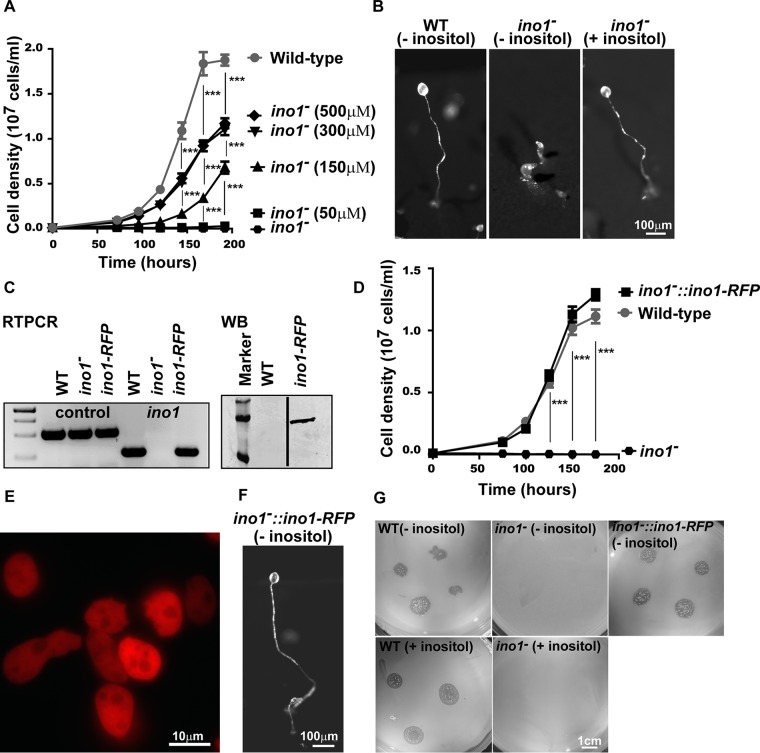FIG 2.
Ablating ino1 in Dictyostelium causes inositol auxotrophy. (A) Dictyostelium cells grown in liquid medium showed rapid growth up to stationary phase (at 168 h). Ablation of ino1 blocked cell growth in the absence of exogenous inositol, with only partial restoration of wild-type growth by the addition of either 300 μM or 500 μM inositol. (B) During starvation, wild-type (WT) Dictyostelium formed fruiting bodies without inositol pretreatment. Under the same conditions, ino1− cells were unable to form fruiting bodies. Fruiting body formation in ino1− cells was restored when the cells were grown with inositol supplementation prior to the assay. (C) Expression of ino1-RFP in Dictyostelium ino1− cells was confirmed by reverse transcription-PCR (RTPCR) with an ig7 gene control and by Western blot analysis (WB) to show the full-length protein (with a ladder). (D to F) The full-length protein restored the growth rate (D), was present in the cytosol (E), and restored development in the absence of exogenous inositol (F). (G) ino1− cells were unable to grow on agar plates seeded with bacteria, and expression of ino1-RFP in these cells restored bacterial growth. For panels A and D, statistical significance was determined by two-way analysis of variance (ANOVA) with the Bonferroni posttest. ***, P < 0.001. Error bars represent standard errors of the means (SEM) for 3 experimental repeats.

